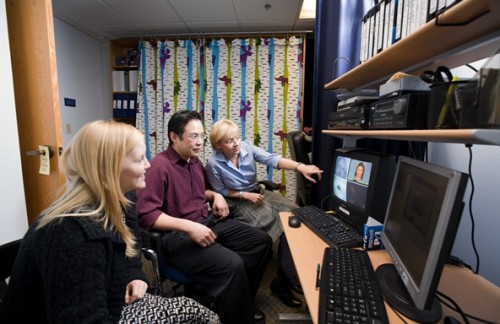
Newborn babies are often associated with stories of almost nonstop crying and wailing that keep parents up and awake long into the night. However, for every 1,000 births worldwide, an average of one to two babies never babble or cry for extended periods of time within their first year. In the United States, the number is much larger — about 20 in every 1,000 children in the United States are diagnosed with Autism Spectrum Disorders (ASD).
Research has revealed that many of the behaviors typical to the disorder manifest themselves early in development. So the question becomes, as Professor Katarzyna Chawarska of the Yale School of Medicine stated, “Why weren’t we studying it?” She recalled a conversation with a colleague; “we weren’t seeing any of the two year old patients before the disorder’s symptoms were shown — so we decided to open a clinic to see them.” Inspired, Chawarska opened the clinic, and her lab recently discovered a method of detecting ASD in infants as young as six months.

Autism and Its Roots
Autism is a neurological disorder that can result in impaired social interaction. Its causes are rooted in early development, and as the brain is shaped immensely by experience, environmental factors are also thought to contribute to the intensity of the disorder. At its roots, ASD is most likely a genetic disorder that results from a plethora of genetic mutations, or epigenetic factors that leave the DNA unchanged, but still influence gene expression.
Researchers suggest two likely biological explanations, though neither have been proven. First, white matter tracts in the brain have been linked to ASD patients. The structure of neuronal networks can be compared to an interconnected railroad track system, where white matter tracts are the physical railroad tracks separating each city’s train station, or each area of the brain. In autistic patients, these railroad tracks have an atypical width and length: white matter tracts which lead to uncoordinated brain activity. This lack of synchronization between brain activity in the frontal and posterior areas inhibits communication and coordination between the two brain areas.
Recent research has also shown a physical overgrowth of the head in many autistic patients, characterized by speedy growth of the head during early development immediately after conception and subsequent slower growth during later months of development. Despite discoveries of these symptoms, the biological roots of the disorder are still unknown to researchers.
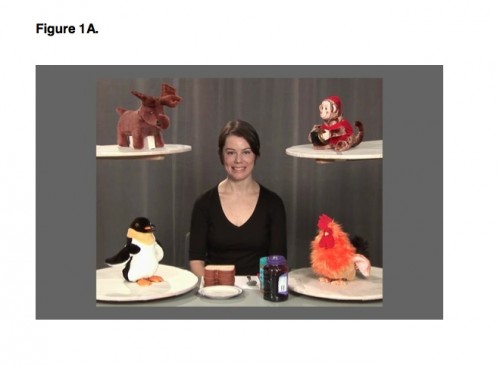
Autism Detection
Many parents take notice of abnormal social behavior within the first 18 months of raising their infants, and 80 percent of autism cases are detected by 2 years of age. For example, autistic infants often exhibit a lack of childish babbling, crying, and gesturing. When a baby or child is brought in for a check-up, the doctor analyzes specific face and gaze processing abnormalities in addition to testing for the psychopathology characteristic of ASD. In recent years, the youngest age at which ASD has been detectable with certainty was between 12-24 months, but with the work in Chawarska’s lab, autism detection has reached new frontiers.
Recent research has encountered abnormalities in the development of white matter in infants as young as 6 months. Similarly, analysts noted the presence of a physical overgrowth of the heads of patients of the same age that would later show signs of ASD. This helped Chawarska realize that something concerning ASD development occurs around six months.
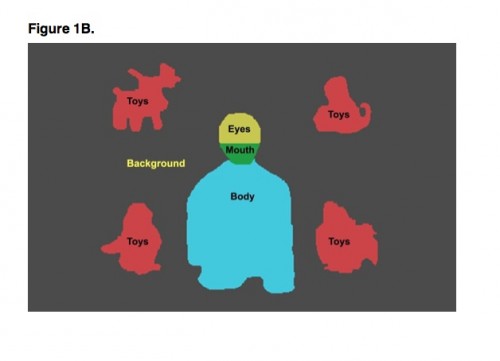
Chawarska began with a simple preliminary test in toddlers, noting that toddlers of about 12 months tend to orient themselves toward human speech. Toddlers with autism showed a more limited response to human contact. Chawarska’s lab then emulated this phenomenon in the laboratory: they decided to use child-directed speech and direct eye contact as stimuli and measure the child’s response to them.
The process was slightly more complicated than this high level description, for it involved monitoring the response of six-month-old infants to dynamic social scenes. 67 “high-risk” infants and five “low-risk” infants, those who had siblings with ASD and those who did not, respectively, participated in the trials. During a given trial, the infants watched a three-minute video of an actress sitting in front of four toys and a table of ingredients. In the video, the woman would occasionally look at the child, making use of the “child-directed cues,” such as a warm smile at the child or speaking with a “baby voice.” The gaze trajectories of the infants were recorded, and the infants were subsequently followed through the next year of life. At age three, it was then noted whether the child ultimately developed autism.
The results of the trials showed that the babies who would go on to develop autism rarely focused on the monitor, and if they did, they focused more on the background of the screen with the toys rather than the face and mouth of the actress.
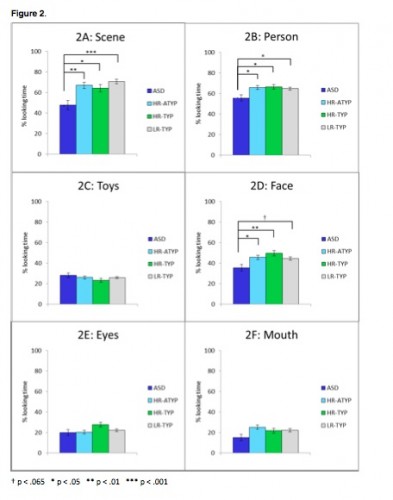
“Decompose the Scene”
Chawarska emphasized that their work is not nearly complete; researchers must first “decompose the scene in a controlled manner and try to understand what is actually preventing the kids from having a normal response time; what is throwing these kids off?” Perhaps there is something in the speech of the actress the autistic infants are not sensitive to, or perhaps they are so overwhelmed by what is happening in the screen that they find it much simpler to stare at the grey background. Regardless, these mystifying results are virtually identical to those obtained in infants aged 14-24 months.
The underlying mechanism of ASD is still unknown; yet, scientists have solid hypotheses. Infants with ASD may have deficits in the ability to detect and prioritize which social stimuli are the most important to process. Another hypothesis attributes the lack of attention to the limited ability of the stimuli to arouse enough positive emotion in the infant to enhance and encourage the infant to pay attention. A final hypothesis is a more simplified deficit: Perhaps the stimuli are changing so rapidly that the infant is unable to distinguish between the social and nonsocial aspects of them, and thus just refuses to pay attention. This mix of causes, though intricately connected, makes the treatment for ASD even more difficult.

Chawarska explained that the next steps involve collaboration between the social and physiological fields of neuropsychology to eventually develop a treatment and cure for ASD. The brain is shaped by experience, and as the brains of infants have yet to be altered by the world, scientists must work to understand the genetic basis of ASD in order to address primary symptoms as early as possible. In the future, this could mean targeting the genes responsible for autism. But until those genes are discovered, scientists must continue to seek more effective strategies for detection and treatment.
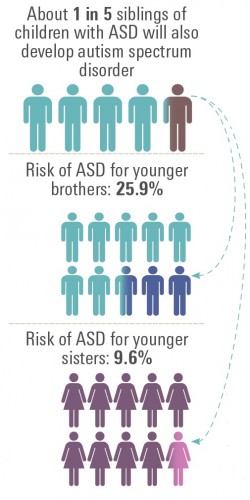
About the Author: Naaman Mehta is a sophomore Molecular, Cellular, & Developmental Biology and Spanish double major and the Outreach Chair for the Yale Scientific Magazine, and served as the Distributions Manager last year. She has worked in the McCormick Lab in the Neurobiology Department studying the mapping of the auditory cortex.
Acknowledgements: The author would like to thank Professor Chawarska for her time and dynamic explanations of her research. Dr. Chawarska would also like to emphasize the important role of parents who have allowed the Child Study Center to test their children for autism. It is because of parents, she emphasizes, that this research is possible.
